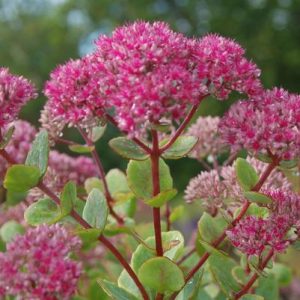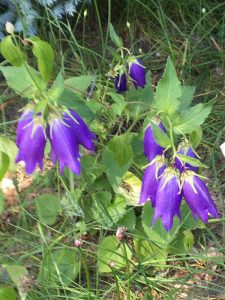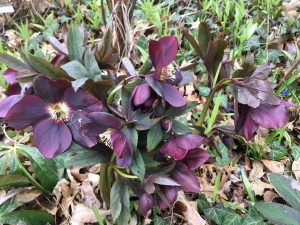 The dictionary definition of tough is “strong enough to withstand adverse conditions”. In the plant world, we are always searching for plants that are tough so they can not only survive but thrive in challenging situations. There are two situations that I find the most challenging: dry sun and dry shade. I speak from my own experience in my gardens, most of which are irrigated. However, there are some spots where the irrigation doesn’t reach or that are beyond the irrigated zones. So, here are some toughies.
The dictionary definition of tough is “strong enough to withstand adverse conditions”. In the plant world, we are always searching for plants that are tough so they can not only survive but thrive in challenging situations. There are two situations that I find the most challenging: dry sun and dry shade. I speak from my own experience in my gardens, most of which are irrigated. However, there are some spots where the irrigation doesn’t reach or that are beyond the irrigated zones. So, here are some toughies.

Sedum ‘Pillow Talk’-pridescorner.com
Many sedums would qualify; in fact, the worst thing you can do to a sedum is overwater it. Relatively new to the market is Sedum ‘Pillow Talk’, introduced by my friend Brent Horvath of Intrinsic Gardens in 2016. It has purple-red stems with fleshy, gray-green foliage that can develop a reddish edge as the season progresses. The foliage is crowned in late summer and fall with five to six inch dark pink-to-magenta blooms that are extremely attractive to pollinators. ‘Pillow Talk’ is reputed to be more resistant to Rhizoctonia and other fungal diseases and the deer have ignored this sedum, perhaps because it is somewhat hidden at the base of ancient burning bushes. Although mature height is supposed to be twenty inches, mine is a mere ten inches, probably because it gets no water unless there is rain and the roots of the burning bushes suck up most of that moisture. In addition, it faces east and is partly shaded by the foliage of the burning bushes.

Campanula ‘Purple Sensation’
Another perennial that is happy in either situation is Campanula ‘Purple Sensation’. It has evergreen, serrated foliage and large purple, down-facing, elongated bells that bloom all summer. Although the bloom stalks are usually eighteen inches tall, the foliage remains close to the ground and acts as an excellent weed suppressor. The basal leaves are rounded while the upper leaves are more ovate. This perennial will fill in faster if given lots of moisture but, once established, it survives easily without supplemental water. Campanula ‘Sarastro’ is similar in all respects except height, possibly a bit shorter.

Eriogonum allenii ‘Little Rascal’, foliage of Ajania, unknown Sedum
Most of us are not familiar with the genus Eriogonum (Wild Buckwheat) because most species are native to the southwestern United States and northwestern Mexico where it grows on scrubby slopes and in chaparral and dry washes. However, Eriogonum allenii (Yellow Buckwheat) is native to the shale barrens of Virginia and West Virginia and is hardy to zone 5. It stays relatively short at sixteen inches, has exceptional drought tolerance, and attracts bees and butterflies. I planted it at the edge of a southeast facing bed where the irrigation never seems to reach. Its yellow umbels bloom supposedly from July through September (mine doesn’t bloom until August) above a dense low growing rosette of gray-green paddle-like leaves.
The first three toughies I’ve described are ones not readily available from Ohio growers (my source has been Digging Dog in California) but the fourth is one you all know – hellebores.

I started with one hellebore twenty years ago in this spot and now have zillions.
I’ve grown a variety of species and cultivars of hellebores for years, some in irrigated spots, some in non-irrigated spots, some in full shade, and some in part shade. All have thrived and some, particularly the H. orientalis straight species, have seeded voluminously. All have large, leathery, divided, evergreen leaves that readily cover the ground. If they become dessicated by winter sun and I have time, I prune them off but most of the time, I just let the new foliage cover the old. Bloom time varies depending upon location. The ones that face south usually bloom in March but the north facing ones, shaded by old Pieris, usually don’t bloom until May. The blooms of Helleborus orientalis are, most often, downward facing pink but they could also be white or cream.

Names are deceiving. ‘Blue Lady’ is actually a lilac purple.

Helleborus ‘Frost Kiss Molly’s White’

Again, names are deceiving. The dark foliage of Helleborus ‘Red Racer’ eventually turns green.
Hybrids that have done well for me are ‘Blue Lady’ (that has seeded a bit), Frostkiss ‘Molly’s White’ (white flowers and variegated foliage), and ‘Red Racer’ that is taller than the others, initially has dark foliage, has dark red flowers that eventually turn purple, and isone of the latest to bloom.

This photo of Helleborus HGC “Joseph Lemper’ was taken last year on March 1.
Some of the Helleborus niger ‘HGC series are much earlier bloomers. ‘Josef Lemper’ has bloomed as early as mid-December for me but I suspect this year, with so much cold and snow, it will be February before I see its flowers.
I’m know you could add to the list of toughies but I’m also sure that you were unaware of at least three of these.


0 Comments